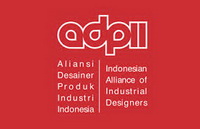Semantik dan netnografi sebagai pendekatan penelitian untuk perancangan kembali (redesign) sebuah produk
Abstract
This article discusses three research approaches that can be used as a basis for redesigning a product. These three approaches are not all related because netnography is usually associated with ethnography, a well-known approach in anthropology. Although some of the examples given here are rather simple, in its limitations, it is expected that this article is useful for those who want to use these three approaches to redesigning a product.
Key words: netnografi, semantic, redesign
Full Text:
PDFReferences
Bagli, H. (2011). Product Semantics Meets the User: A Design Workshop with a Fresh Look to an Old Paradigm. Istanbul Technical University A|Z, 8(2).
Burnette, C. (1994). Designing products to afford meanings. Design-Pleasure or Responsibility, 120–125.
Evers, B. (2016). Gazelle Success in the United States of America Design Thinking. University of Twente.
Kozinets, R. V. (2016). Netnography: Redefined, second edition. Los Angeles: SAGE Publications, Inc.
Maurer, C., Overbeeke, C. J., & Smets, G. (1992). The Semantics of Street Furniture. In S. Vihma (Ed.), Objects and Images. Helsinki: University of Industrial Arts.
Nöth, W. (1995). Handbook of semiotics. Bloomington: Indiana University Press.
Osgood, C. E., G.J., S., & P.H., T. (1957). The Measurement of Meaning. Urbana: University of Illinois Press.
Stefik, M. (1996). Internet Dreams. Boston: MIT Press.
Zoest, A. van. (1993). Semiotika: Tentang Tanda, Cara Kerjanya, dan Apa yang Kita Lakukan Dengannya. Jakarta: Yayasan Sumber Agung.
DOI: https://doi.org/10.24821/productum.v3i3.1925
Refbacks
- There are currently no refbacks.
p-ISSN 2477-7900 | e-ISSN 2579-7328

This work is licensed under a Creative Commons Attribution 4.0 International License.
Like & Follow Us










